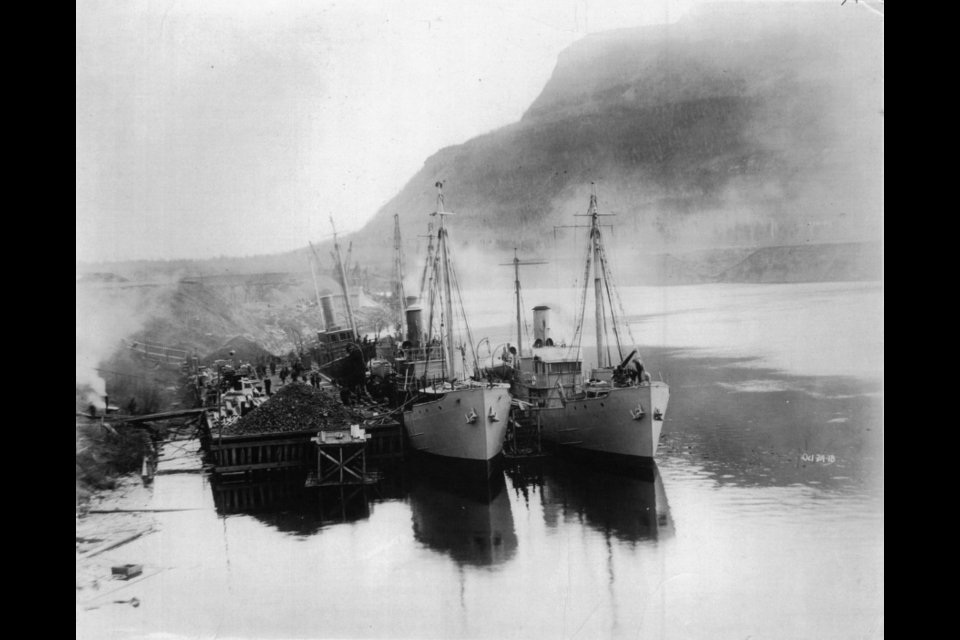Somewhere in Lake Superior lie the remains of 76 French sailors, a pair of Canadian Great Lakes pilots and the two minesweepers they were guiding on a voyage out of Thunder Bay in 1918.
This summer, a search team organized by the Great Lakes Shipwreck Museum at Whitefish Point, Michigan has deployed advanced equipment including an untethered Autonomous Underwater Vehicle and sonar in the waters around the Keweenaw Peninsula.
After six weeks, there has been no sign of either boat.
Spokesperson Sean Ley says "What we do know is where they are not located...The sonar takes a sound picture of the bottom, and you can see what's there and what isn't there, and I can tell you that there's a whole lot of empty lake."
This isn't the first search for the minesweepers, but it is likely the best-equipped and best-organized so far, and Ley is confident the boats will eventually be located.
"They'll be found at some point," he told Tbnewswatch.com in an interview.
The Inkerman and the Cerisoles, along with a third minesweeper, were launched on November 23, 1918 for the French Navy at the Canadian Car and Foundry plant on the banks of the Kam River.
The next day they got caught in a severe gale and blizzard from which only the Sebastopol emerged still afloat.
No trace of the Inkerman, the Cerisoles or their crews was ever found. It was the largest single loss of life in a marine accident on Lake Superior.
Ley said "We do know they are somewhere off the Keweenaw Peninsula, but what we don't know is if they are 10 miles off Keweenaw or 100 miles off, because the ship that survived did not see them founder."
He said it's possible the vessels even went to the bottom on the Canadian side of the border.
The director of the Thunder Bay Museum, Tory Tronrud, said he's happy to see that the current effort to solve the mystery is more scientific and technologically advanced than some previous ones.
"There's lots of shipwrecks out there that have gone down and have been discovered, but the ones that are still out there somewhere are the ones that spark people's imaginations, and of course there's the war angle as well."
Tronrud said the French government's order for minesweepers was a significant development for the Lakehead during the war years. "Unlike the rest of the country, Thunder Bay got virtually no wartime contracts, so it's industry was pretty much lying idle throughout the war. Getting a big contract like that was a chance for a big industry at the Lakehead to start up again."
Tronrud noted that after the ships sank, there were some suggestions during the inquiry phase that they hadn't been properly completed or that there were flaws in their design.
However, Can Car had successfully built other ships under the same design.
A representative of Lloyd's Insurance Co., which held a policy on the ships, reportedly told a local journalist "The French minesweepers built at the Canadian Car and Foundry Co.'s shipyards were structurally strong and seaworthy, and as perfect a type of boat that I have ever inspected."
Ley said the ongoing interest in locating the two naval vessels is due in part to the fact that warship wrecks on the Great Lakes are so rare. Having French crews on Canadian-built boats that likely sank in American waters is a unique element that adds to the intrigue, he noted.
Unless the ships are found in the coming weeks, Ley said the search team will resume the hunt next year.
